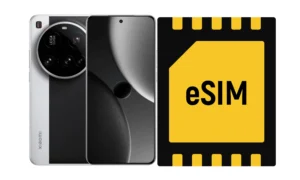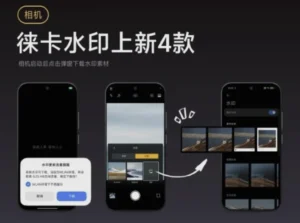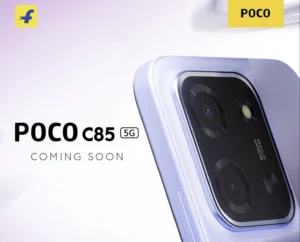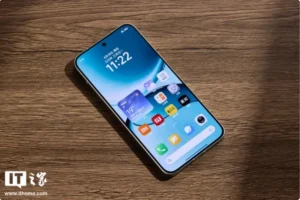Silicon-Carbon Batteries: What’s the mAh Capacity?
The Silicon-Carbon Batteries Revolution: What’s the mAh Capacity?
Hey everyone, and welcome back to xiaomiforall.com! We all know how crucial battery life is for our smartphones, right? Well, a recent tweet from @tech_burner has got the tech world buzzing, all about the first smartphone in India rocking a silicon-carbon battery in its segment. Teaming up with fellow tech influencer @sandeep9sarma, they’ve really sparked our curiosity, dropping a little challenge: Can you guess the battery capacity? Today, we’re diving deep into this awesome innovation, what it means, and of course, trying to crack that mystery: What’s the capacity? #PowerRevolution #mAhAisComing
What Exactly is a Silicon-Carbon Battery?
Think of silicon-carbon batteries as the next big leap forward from the good ol’ lithium-ion batteries we’ve been using for ages. You know how traditional ones use graphite anodes? Well, these new kids on the block swap that out for a silicon-carbon compound. The real kicker here is silicon itself – it can theoretically hold way more energy than graphite. We’re talking around 4200 mAh/g for silicon compared to graphite’s 372 mAh/g. What does that mean for us? More juice in the same amount of space, leading to slimmer phones with bigger batteries, or just plain bigger batteries without making your phone a brick!

But here’s the catch with silicon: it’s a bit of a drama queen. It can expand by up to 300% when it’s charging, which over time, can mess with the battery’s health. That’s where the carbon comes in. By mixing it with silicon in the anode, it helps keep things stable and makes the battery conduct electricity better. Plus, these batteries are a bit kinder to our planet. Silicon is more readily available than rare materials like cobalt or lithium, and they generally have a smaller environmental footprint. Oh, and did I mention they can handle faster charging and perform better in the cold? Super ideal for those high-end smartphones we all love.

India Gets the First Taste: The Silicon-Carbon Smartphone
The buzz started by @tech_burner and @sandeep9sarma is all about a groundbreaking smartphone launch in India featuring this cutting-edge battery tech in its segment. While the tweet didn’t spill the beans on the exact model, from what we’re seeing in the market, it’s likely a device from brands like Realme, Vivo, or Oppo, who’ve been pretty quick to adopt silicon-carbon batteries. A strong contender here is the Realme GT 7 Pro. It landed in India with a massive 5800 mAh battery, uses this new silicon-carbon tech, and boasts a super-fast 120W charging that gets you to 50% in just 14 minutes.
Another possible candidate is the Vivo X200. This one packs a 5800 mAh silicon-carbon battery, built tough to handle extreme temperatures and even giving you up to 17 hours of video playback. These devices are really showing us what’s possible – packing huge battery capacities into sleek, slim designs, totally changing what we expect from our phones.
So, What’s the Actual Battery Capacity?
While @tech_burner is making us play detective, based on the latest silicon-carbon battery phones hitting India, the capacity seems to be hovering in the 5800 to 6200 mAh range. For instance, the Redmi Note 14 Pro+ is rumored to feature a 6200 mAh battery. That’s a 24% bump from its predecessor, yet it’s staying the same size! This kind of capacity means you can power through a full day of serious use – think gaming, streaming, and everything in between – without constantly hunting for a charger.
The Impact of the #PowerRevolution
The arrival of silicon-carbon batteries isn’t just a small update; it’s truly kicking off a revolution in the smartphone industry. We’re not just getting sleeker phones with longer-lasting batteries, but this tech is paving the way for similar advancements in other gadgets, from our smartwatches to electric vehicles. Of course, it’s not all perfect yet. There are still some hurdles, like slightly higher production costs and maybe a marginally shorter lifespan compared to the traditional lithium-ion batteries.
But with big players like Samsung and Apple already exploring this technology for future releases, like the Galaxy S26 or the iPhone 17 Slim, widespread adoption feels like it’s just around the corner. And in a market like India, where battery life is a massive deal for consumers, this innovation is set to shake things up big time. You can learn more about some upcoming tech at https://in.event.mi.com/in/the-power-revolution.
So, to wrap it up, that first smartphone in India rocking a silicon-carbon battery in its segment is likely packing a punch with a capacity around 5800-6200 mAh, striking a sweet spot between raw power and stylish design. The #PowerRevolution is officially here, ushering in a whole new era for smartphones. What are your thoughts? Did you guess the capacity right? Jump into the conversation with @tech_burner and @sandeep9sarma!
Silicon-Carbon Batteries: What’s the mAh Capacity?








1 thought on “Silicon-Carbon Batteries: What’s the mAh Capacity?”